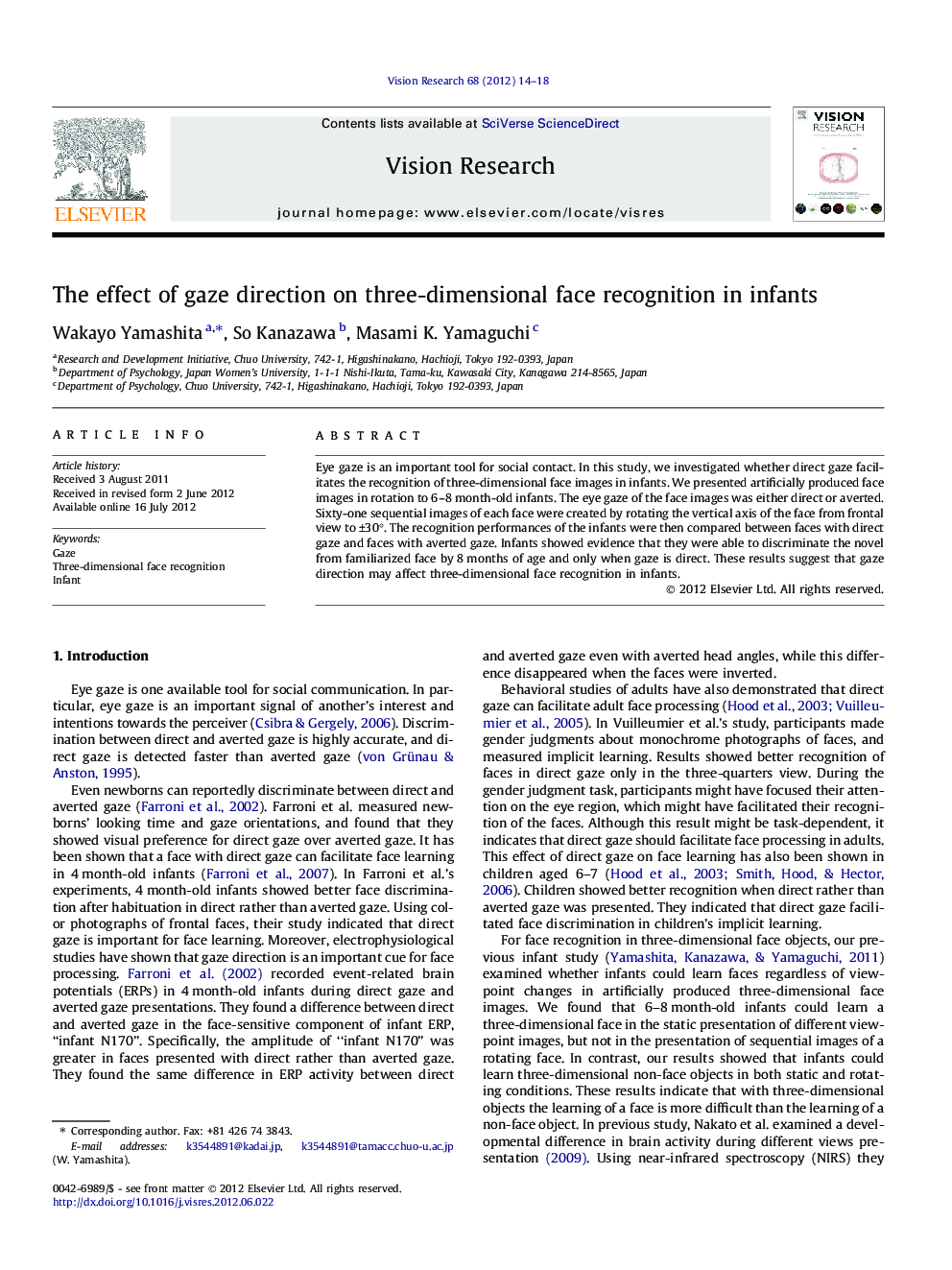| Article ID | Journal | Published Year | Pages | File Type |
|---|---|---|---|---|
| 4033923 | Vision Research | 2012 | 5 Pages |
Eye gaze is an important tool for social contact. In this study, we investigated whether direct gaze facilitates the recognition of three-dimensional face images in infants. We presented artificially produced face images in rotation to 6–8 month-old infants. The eye gaze of the face images was either direct or averted. Sixty-one sequential images of each face were created by rotating the vertical axis of the face from frontal view to ±30°. The recognition performances of the infants were then compared between faces with direct gaze and faces with averted gaze. Infants showed evidence that they were able to discriminate the novel from familiarized face by 8 months of age and only when gaze is direct. These results suggest that gaze direction may affect three-dimensional face recognition in infants.
► We investigated the effect of direct gaze on recognition of 3D face images. ► Eight-month-old infants could discriminate novel from familiarized face with direct gaze. ► We suggest that gaze direction can modulate face processing by 8 months of age.
